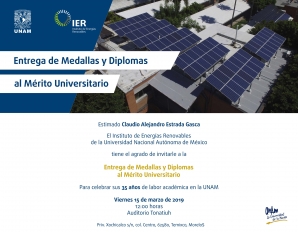Elisa Alonso, Carlos Pérez-Rábago, Javier Licurgo, Alessandro Gallo, Edward Fuentealba, Claudio A. Estrada
Abstract
Solar reactors designed and constructed for thermochemical applications present different configurations and general performance. The selection of a solar reactor that optimizes a particular process is always a difficult challenge. This work studies two types of reactor configuration by means of a comparative experimental analysis. It was employed a solar device, which is able to operate as fixed reactor with packed bed samples and as rotary kiln. The reduction of CuO into Cu2O was tested under both operation modes, due to its proved potential and interest as thermochemical storage material. It was found that heat transfer was hindered in static experiments limiting the fraction of reactive sample. Thermal gradients of about 200 °C were found in the packed bed through thermocouple and IR camera measurement. Heating rates and total fed energy must be restricted at the risk of front of the sample to melt, resulting in several operation drawbacks. In contrast, mixing conditions in rotary kilns allowed for higher heating rates and led to homogenous sample temperature. Maximum reaction yields in stationary mode did not overpass 14% while it was achieved more than 80% in rotary mode at temperatures about 860 °C. Thermal efficiencies were very limited in both operation modes due to the high thermal inertia of the solar reactor. Because rotary mode admitted much more energy, its thermal efficiency was even lower than static. A solution to increase rotary kilns thermal efficiency is working in continuous mode.

